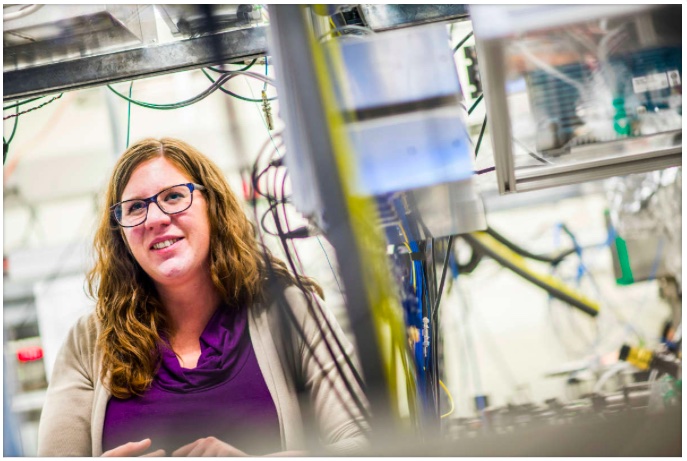Quantum computing inched a little closer with a demonstration of quantum memory using light pulses stored in a cloud of ultra-cold rubidium atoms.
The light pulses, which can scale down to a single photon, are shone into the cloud to write and store data. A second reference, or control, pulse of light of a different nature is shone at the cloud to retrieve the original pulse and the same information.
Lindsay LeBlanc, assistant professor of physics and Canada Research Chair in Ultracold Gases for Quantum Simulation, conducted the research with post-doctoral fellow Erhan Saglamyurek. They say the technique could be used to build quantum memory for quantum computers.
Saglamyurek adds: “The amount of power needed is significantly lower than current options, and these reduced requirements make it easier to implement in other labs.”

Baby, it’s cold outside
Quantum computers need to operate at temperatures near absolute zero (Kelvin scale) and the super-cooled rubidium atomic cloud is at that level.
In their research, LeBlanc and Saglamyurek used a technique scheme that “relies on dynamically controlled absorption of light via the ‘Autler–Townes effect’, which mediates reversible transfer between photonic coherence and the collective ground-state coherence of the storage medium.“
The researchers demonstrated proof-of-concept storage and signal processing capabilities in a laser-cooled gas of rubidium atoms, including storage of nanoseconds-long single-photon-level laser pulses for up to a microsecond.
The microsecond storage time is a good start and the discovery could pave the way to scaling up quantum computing research.
LeBlanc and Saglamyurek’s paper, “Coherent Storage and Manipulation of Broadband Photons Via Dynamically Controlled Autler-Townes Splitting,” (small paywall) is published in Nature Photonics.







